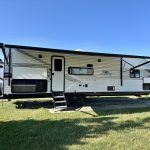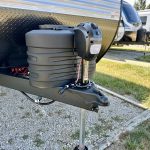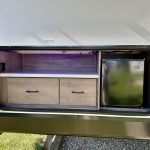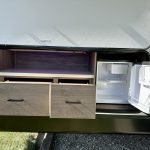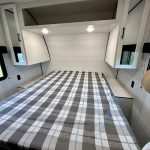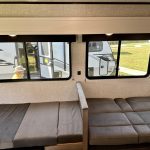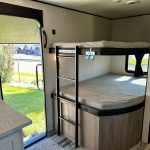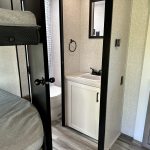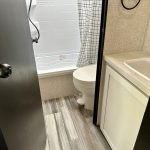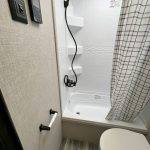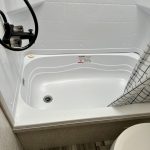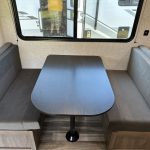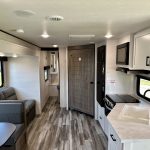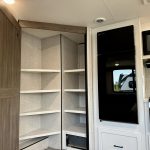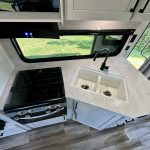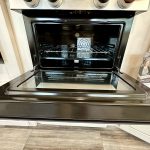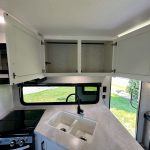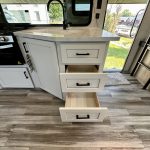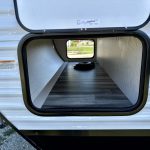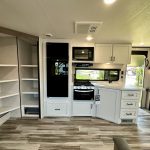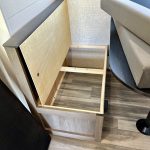Two of the best things about RV camping are being able to spend time outdoors and getting to explore new places. Sure, you could always explore on foot. However, seeing the world from the seat of a bike adds a definite element of fun. (Not to mention adventure!) After all, even a trip to the camp store is way more fun on a bike. Cycling allows you to cover a lot more ground — and is easier on the joints. Especially if the bikes you bring in your RV are electric bikes.
Cycling makes exploring off-the-beaten-track locations and hidden gems into as adventure that eliminates hassles like finding parking. (Or paying for it.) Many patios and restaurants now offer some form of bike parking. That means you can ride your bike there, relax, grab a bite, and enjoy a beer (or two) without worrying about having a designated driver.
And just when you think it couldn’t be any better, along come folding e-bikes! These electric bikes fold up to make bringing a bike in your RV easier than ever. You get the normal bike features, but you don’t have to purchase an RV bike rack.
So, let’s take a look at what to look for when shopping for an electric bike for your RV — and our top three electric bikes for camping.
Shopping RV Electric Bikes? Here Are a Few Tips
Determine Watt You Need
First, consider the type of riding you’ll be doing and your budget. For example, there are e-bikes that are fully equipped for mountain biking adventures. Others are better suited for short rides around the campground. For example, 500-watt e-bikes are a good choice for riding long distances on flat, paved bike paths and/or roads.
If you plan to ride in a variety of conditions (but range isn’t a priority), consider a 750-watt e-bike. This will give you enough power to get over hills and through virtually any terrain. A 750-watt e-bike has enough power and torque to get you through a range of conditions, making your ride a lot more fun. The drawback here is that since 750 watts uses more energy, your e-bike battery won’t take you quite as far as it would go on a 500-watt bike. However, since 750-watt bikes have ranges of up to 68 km, draining their batteries could still be a challenge.
Compare These Features
- Torque sensor. A torque sensor gives you more pedal assistance according to pressure on pedals. This can be helpful for hill climbing or navigating trails.
- Security. Look for security features, like keyed start, locking battery, Apple Find My App integration etc.
- Comfort. Choose a bike that’s a comfortable fit for you. As a general rule, there should be a minimum clearance of 1.5 to 2 inches between the top tube and the top of your inseam when you stand over the bike. Also, a good bike fit lets you enjoy a relaxed, upright posture and a comfortable seat.
- Height. A low step through frame is perfect for anyone that doesn’t want to hoist a leg up and over the top tube to get on the bike.
- Folding options. A folding e-bike can offer multiple advantages from low clearance and storage options, fitting neatly into the back of a vehicle, into a basement storage bay, or tucking away inside the RV itself. This not only eliminates the added expense of an e-bike rack, but it ensures you can store your e-bike out of the sight-lines of would-be bike thieves.
- Assists. Having both pedal assist and throttle lets you either pedal or just enjoy the ride with minimal work..
- Tires. Pay attention to tire tread patterns. Some tires are designed for efficient use on pavement but will slide out unexpectedly on loose or wet surfaces. A waterproof rating of IPX7 or better on both the battery and bike will allow you to ride in wet or damp conditions without worrying about getting shocked or damaging your bike.
- Certifications. An e-bike that has safety certification from UL (Underwriters Laboratories) on battery and bike offers assurance that the bike manufacturer has done everything necessary to meet safety standards.
Best RV Electric Bikes for Camping
Each of these bikes has outstanding features coupled with a phenomenal range that takes it miles ahead of the rest of the e-bike pack. All three are 750-watt e-bikes, which we think provide the best value. While two of these are folding bikes, we included one for diehard frame style for traditionalists too.
1. Velotric Fold 1 Plus Folding E-Bike
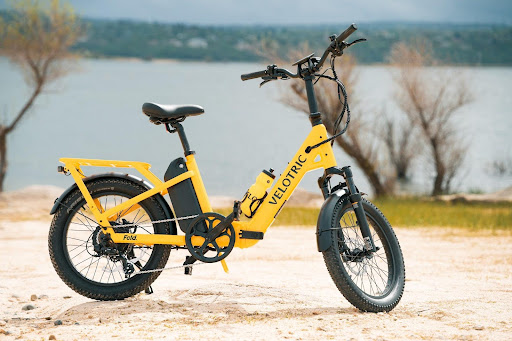
The feature-loaded Velotric Fold 1 Plus e-bike is designed for getting wild. Its 20-inch, all-terrain wheels, low-step-thru height and three drive modes are designed to give you the confidence and ability to go wherever you want in easy comfort. The stylish Fold 1 Plus folds up so compactly that you could easily store three of them in the back section of an Class B, SUV, or pickup — whatever you’re towing with.
That means you don’t need to add an expensive and heavy e-bike rack to your cargo weight. At 63 pounds, it’s light enough to be easily lifted into the back of a vehicle or into the RV. On top of that, it comes stock with a comfortable seat and handlebar that can be customized to fit your riding preferences. But that’s just the beginning on this nimble and fun little bike.
Features
- 750-watt, rear -rive motor
- Range: 68 miles
- Weight: 63 pounds
- Max weight capacity: 450 pounds
- Tires: 20 inches x 3 inches
- Folded dimensions: 38 inches (L) x 19 inches (W) x 33 inches (H)
- Stepover height: 15.35 inches
- Torque sensor added
- Colors: Electric Blue, Mango, Pearl White, Stone Gray
- Modes: 3 – battery-saving Eco; Trail to give you power when you need it; Boost to help you get up hills (modes and settings can be changed on the fly)
- Walk-mode setting: keeps the bike from going over 2.6 mph
- Pedal assist: 5 levels
- Hydraulic suspension fork that can be locked out
- Completely waterproof
- Battery and bike are UL-certified for safety
- Bluetooth-enabled
- Device charging port
- Water bottle mounts: 2
- Apple Find my functionality to locate your bike with an Apple device
- Rear rack and fenders
- 8 gear cassette
- Color monitor display
- 200-lumen headlight
- Turn signals and brake light
- Loads of available accessories
- Adjustable stem lets you customize a comfortable and safe (fit for riders from 4 feet 9 inches to 6 feet 5 inches)
- Two-year warranty
- MSRP $1,399
2. Biktrix Stunner LT 8
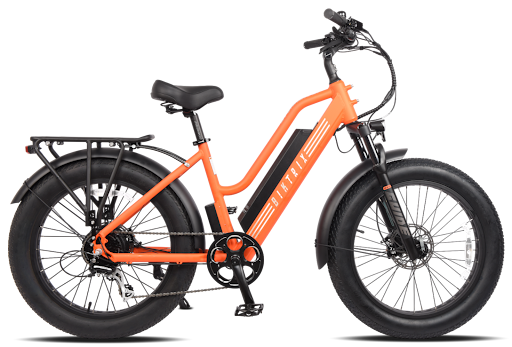
The aptly named Biktrix Stunner LT 8 is a great choice for a go anywhere camping bike. But there’s more to it than rugged good looks. With that said, those who prefer a more conventional style bike will be impressed by this Stunner’s feature rich design. Front shocks and beefy Kenda tires help give it a comfortable, stable ride in a variety of conditions. The 750-watt, rear0drive motor has a very respectable range of up to 68 miles. This bike comes in two sizes: small (20-inch tires) and medium (24-inch tires).
Features
- 750-watt, rear -rive motor
- Range: 68 miles
- Weight: 68.5 pounds
- Max weight capacity: 330 pounds
- Standover height: 21.3 inches
- Tires: small (20 inches) or medium (24 inches)
- Water bottle mounts: 2
- LCD dsplay
- Colors: 8 vibrant options + 192 available custom colors
- Integrated 200-lumen headlight
- Rear rack and fenders
- 8 gear cassette
- MSRP $2,199
3. Rad Power Bikes RadExpand 5 Plus
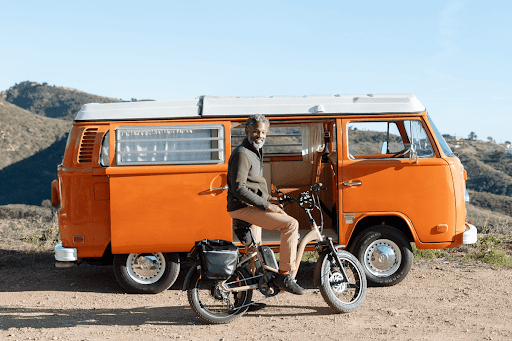
If you’re looking for a bike that can take you where you want to go in comfort and style, Rad Power Bikes RadExpand 5 Plus could be the perfect bike to pack into your RV. This nimble little bike has a respectable up to 60-mile range between charges. A torque sensor measures the pressure you’re putting on the pedals and gives you the perfect amount of pedal assistance. This bike is similar in many ways to the Velotric Fold 1 Plus, but it’s a little smaller, giving it a smaller footprint when it’s stored.
Features
- 750-watt motor
- Ranges: 60 miles
- Weight: 72.5 pounds
- Maximum weight capacity: 330 pounds
- Rider heights: 4 feet 10 inches to 5 feet 10 inches
- Stepover height: 16 inches
- Folded dimensions: 29 inches (H) x 25 inches (W) x 41 inches (L)
- Colors: Stone Tan and Slate Blue
- Torque sensor
- Hydraulic suspension fork
- Device charging port
- Waterproof
- Full lineup of accessories
- Integrated 200-lumen headlight
- Turn signals and brake light
- Half-twist throttle
- 7 gear cassette
- UL-certified for safety
- Two-year warranty
- MSRP: $1,899
RV Electric Bikes: Another Way to Extend Your Range
Cycling is a fantastic way to get exercise and fresh air as you explore new places or run errands— which makes electric bikes and RVs a perfect fit for one another. With an e-bike, walking to the campground store or shower no longer seems like a chore. It’s just fun! Mundane trips become adventures. Not only that, but cycling is a simple and easy way to explore local attractions, wineries, farmer’s markets and anywhere else you want to go.
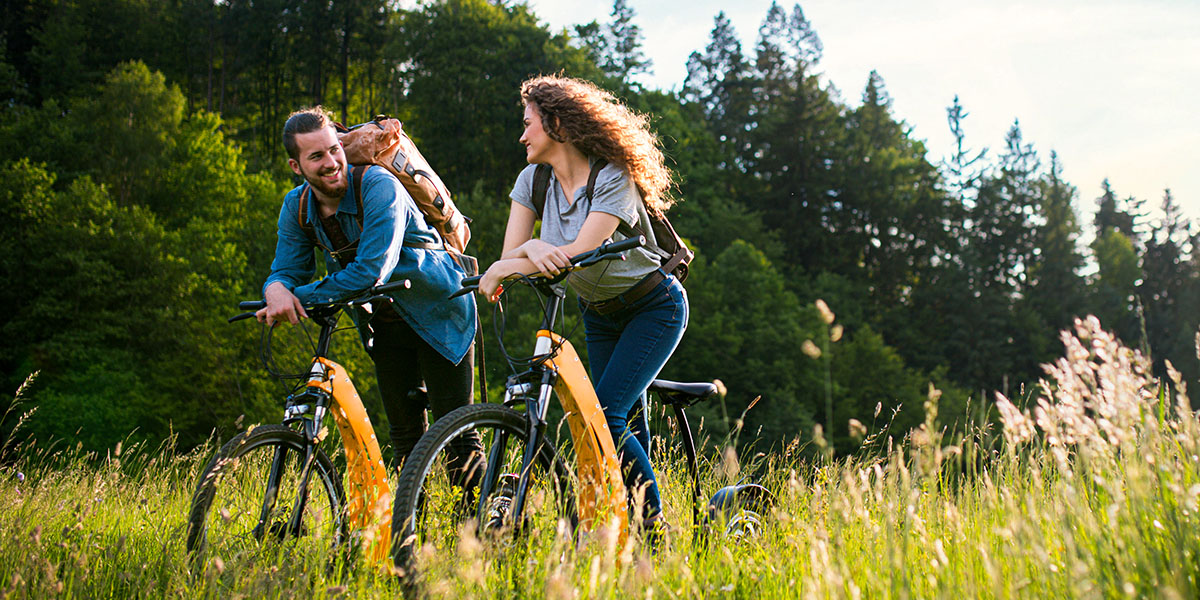
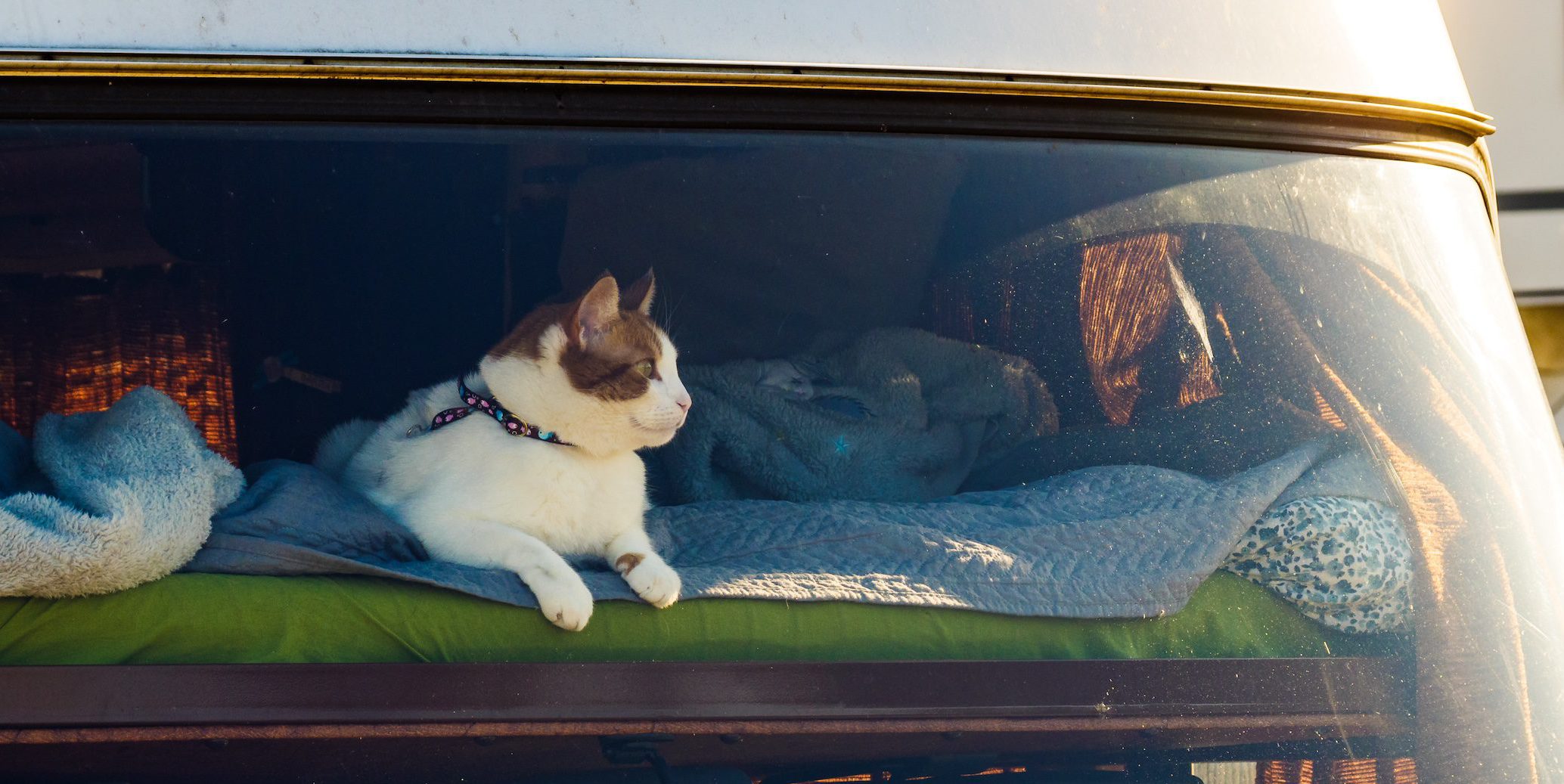


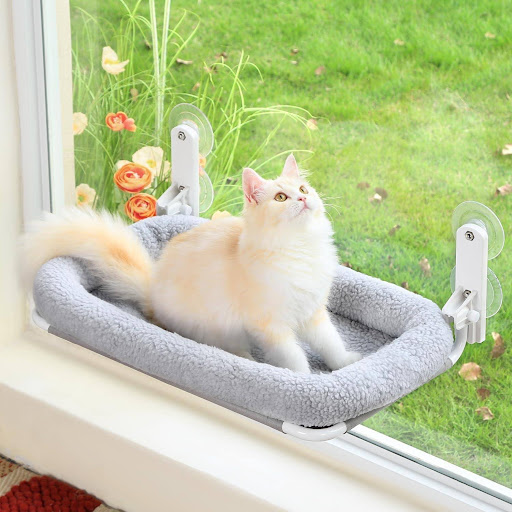
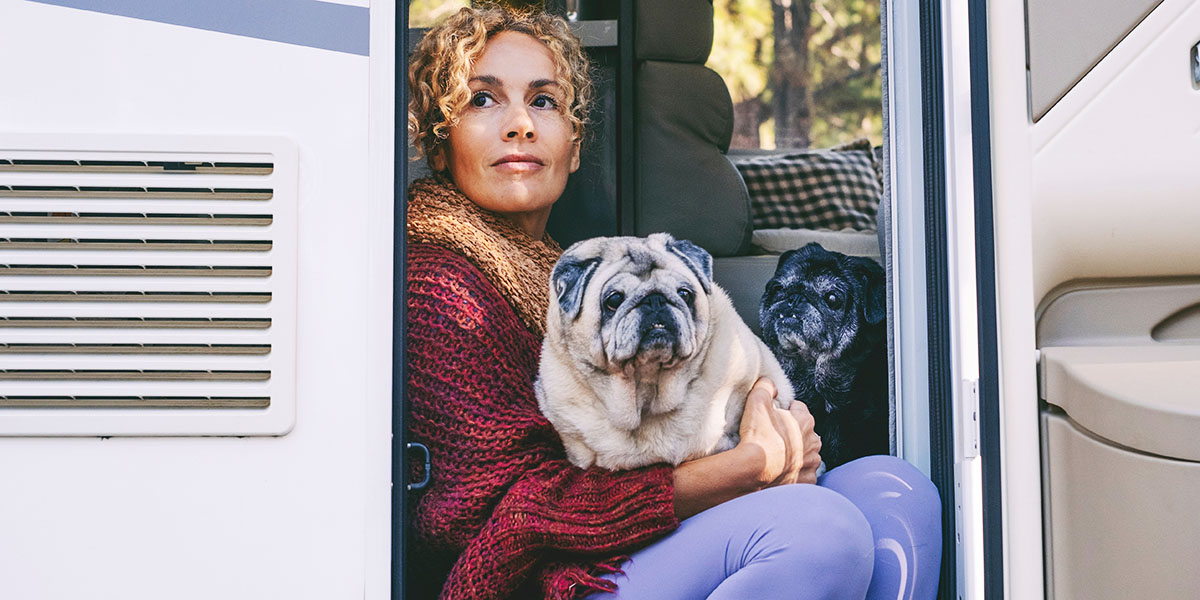


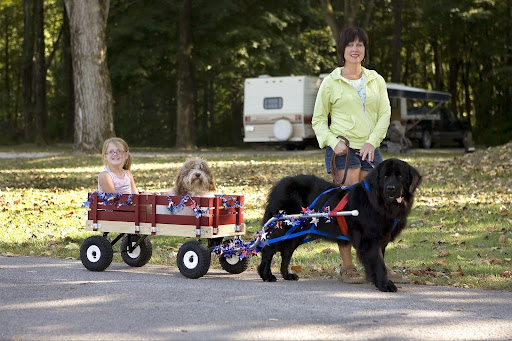
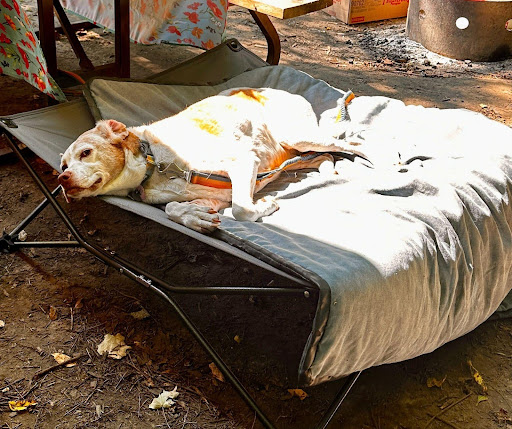

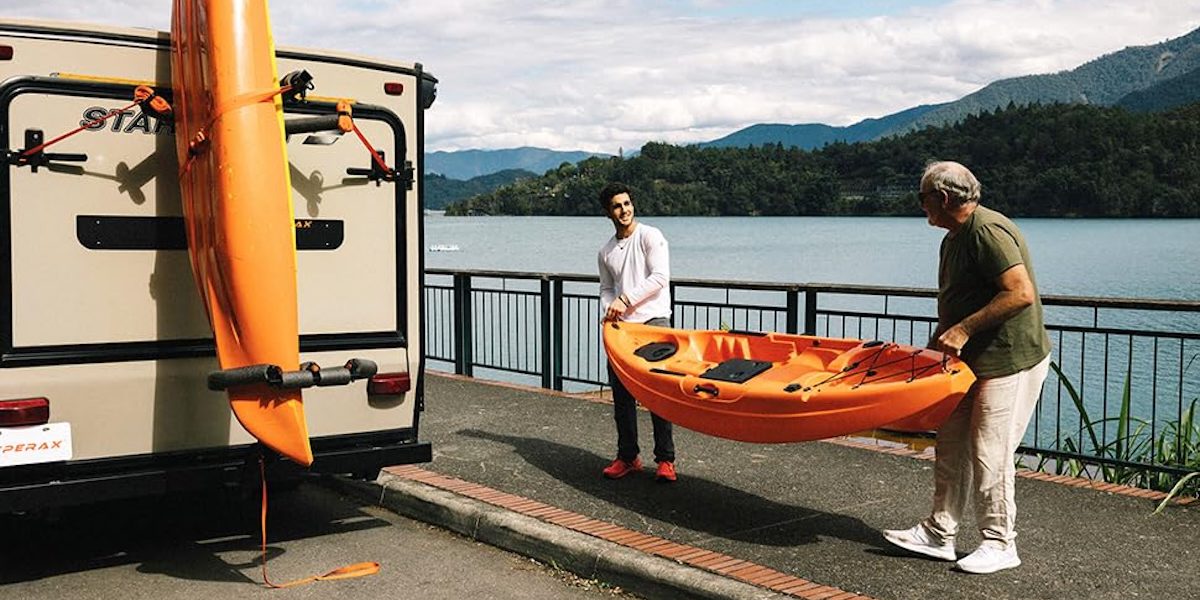


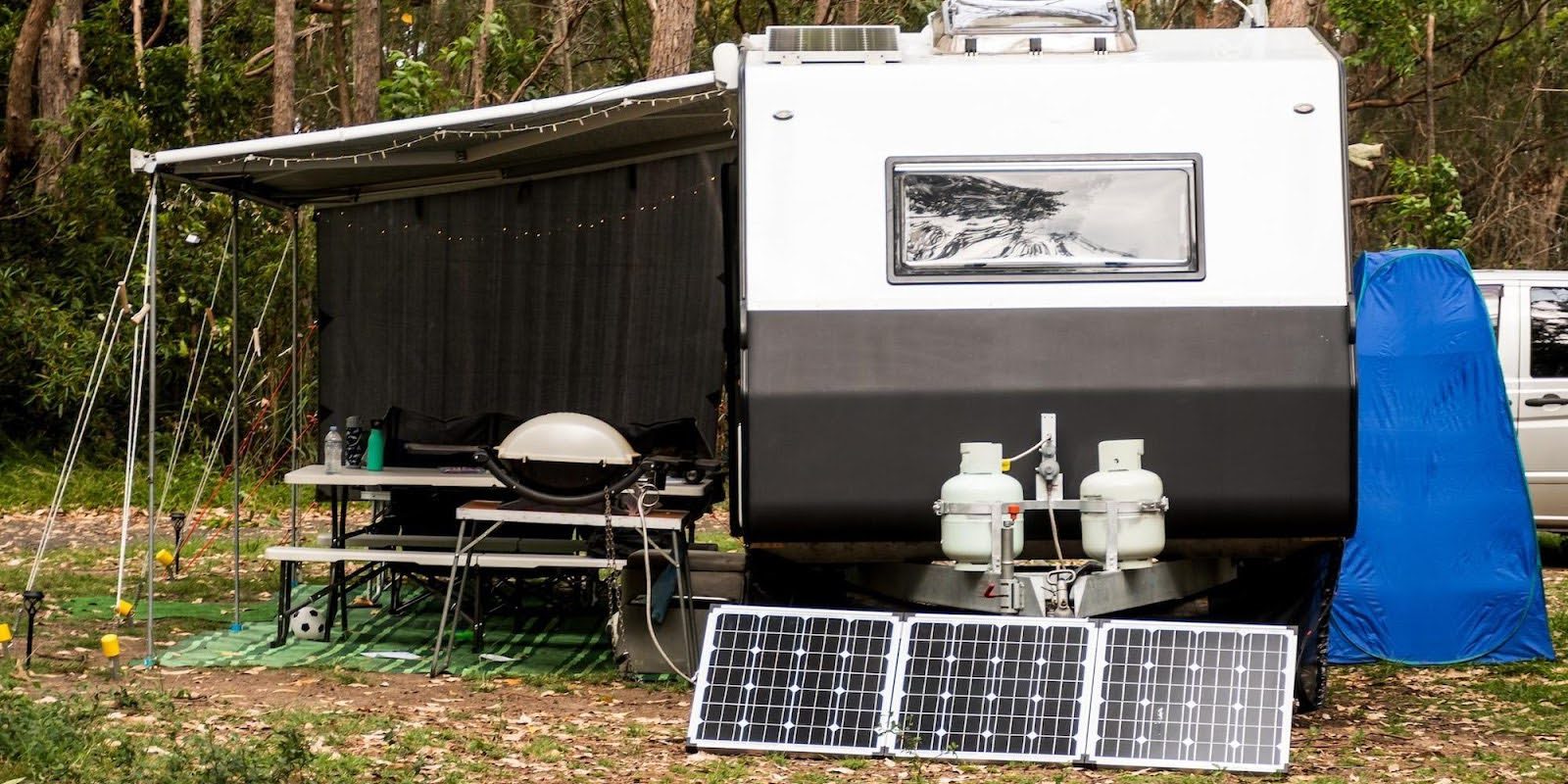
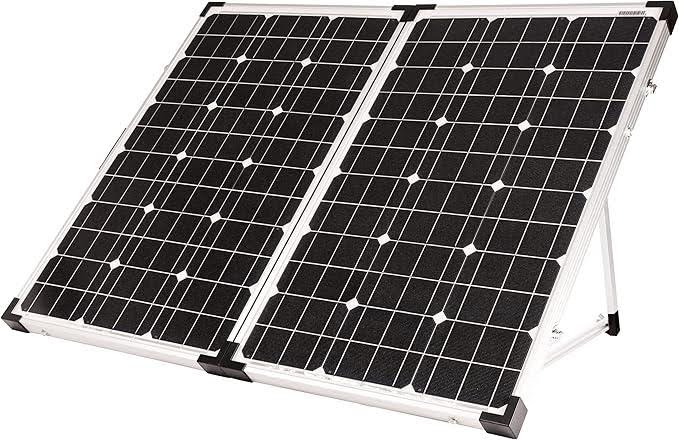
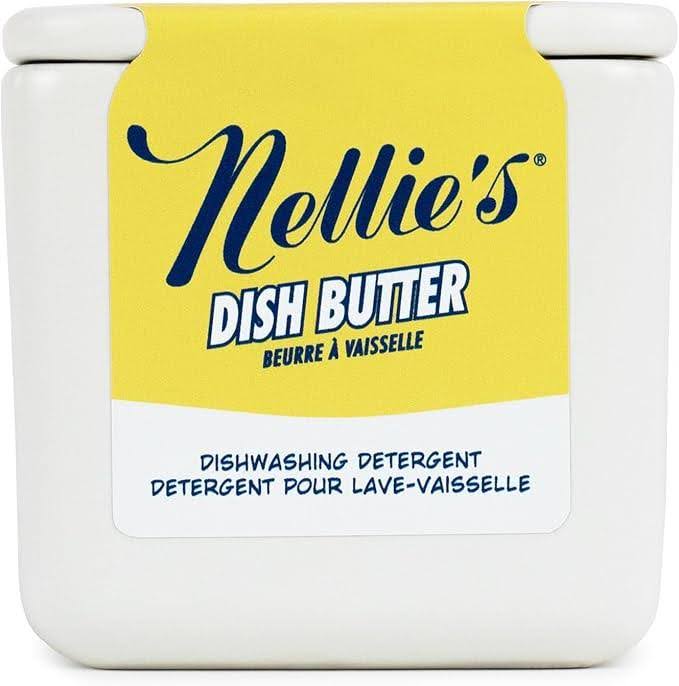

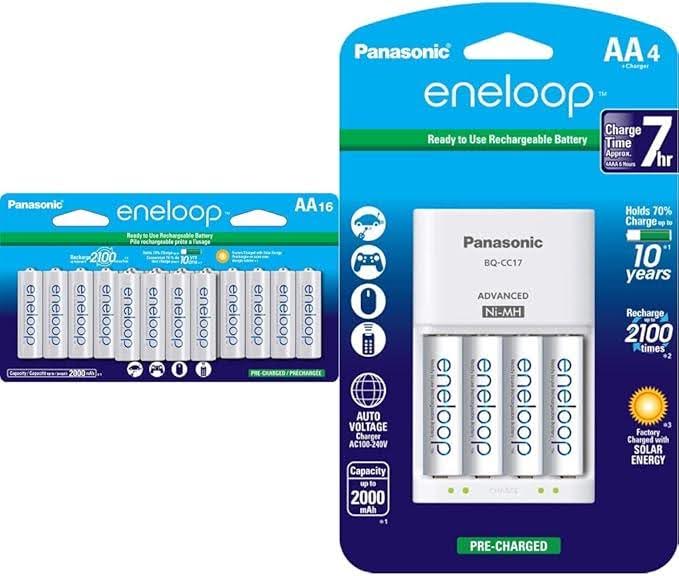

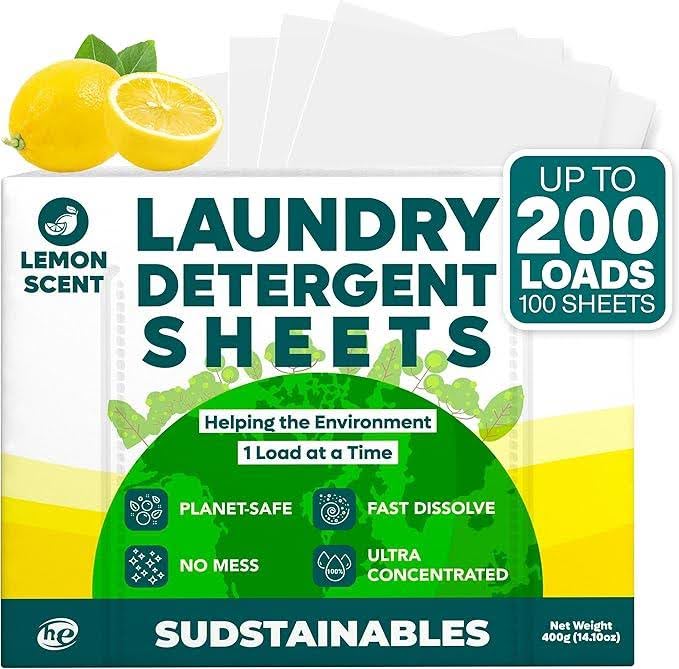

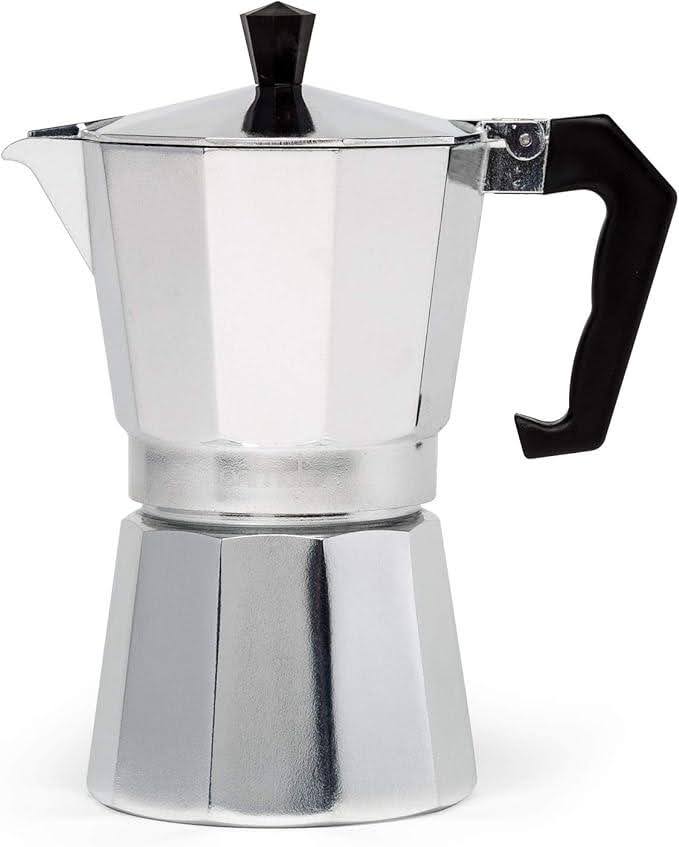
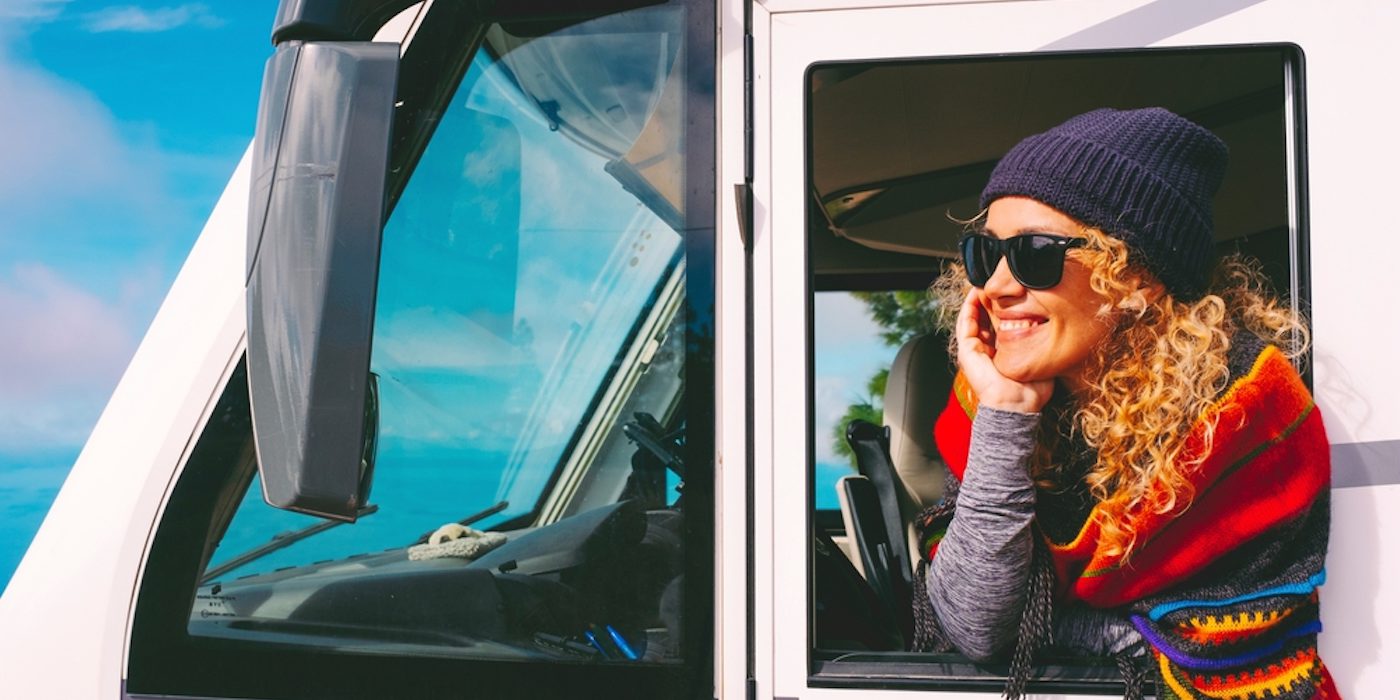
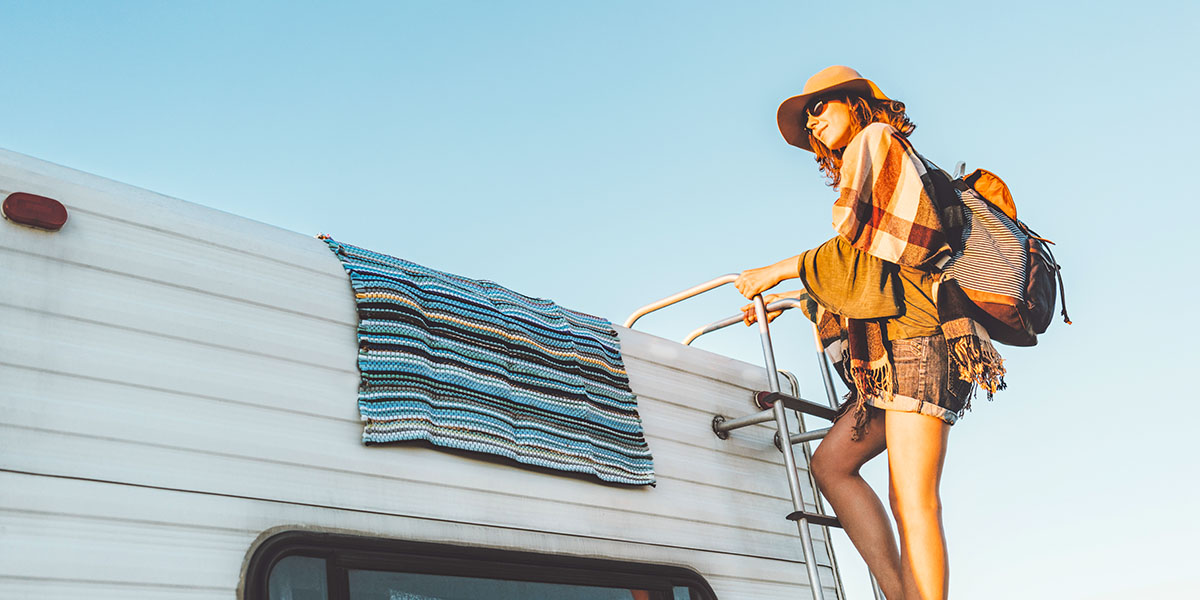
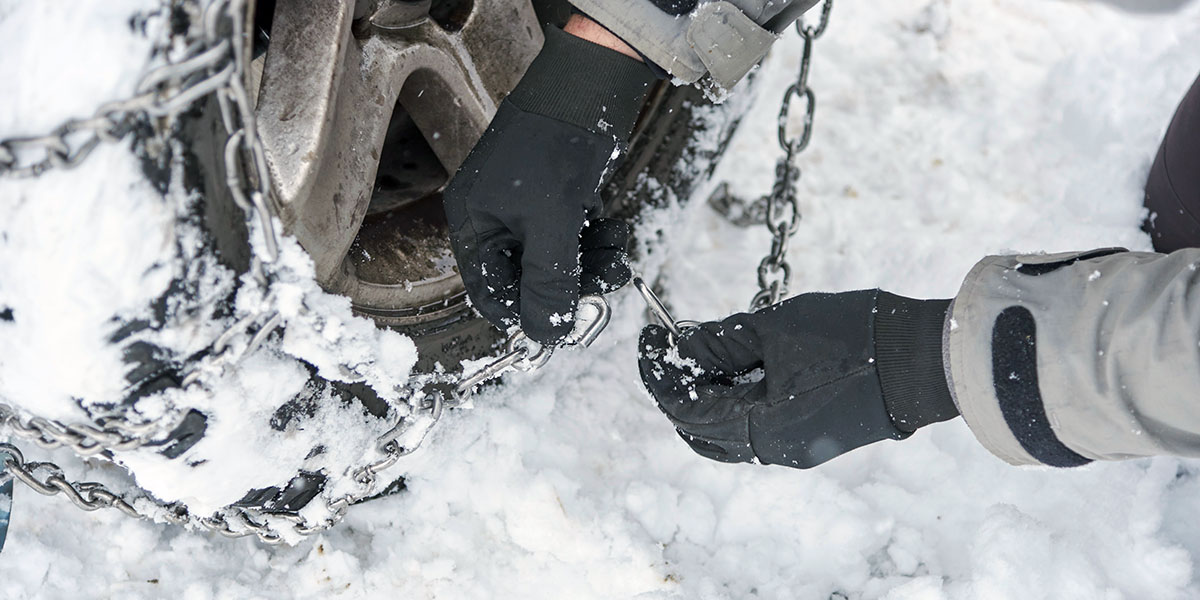




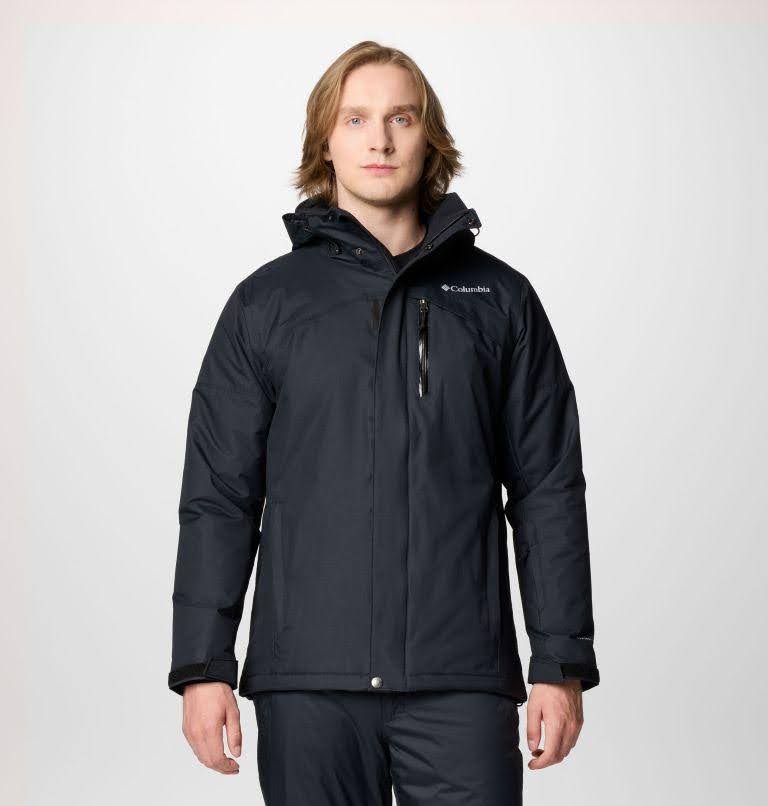
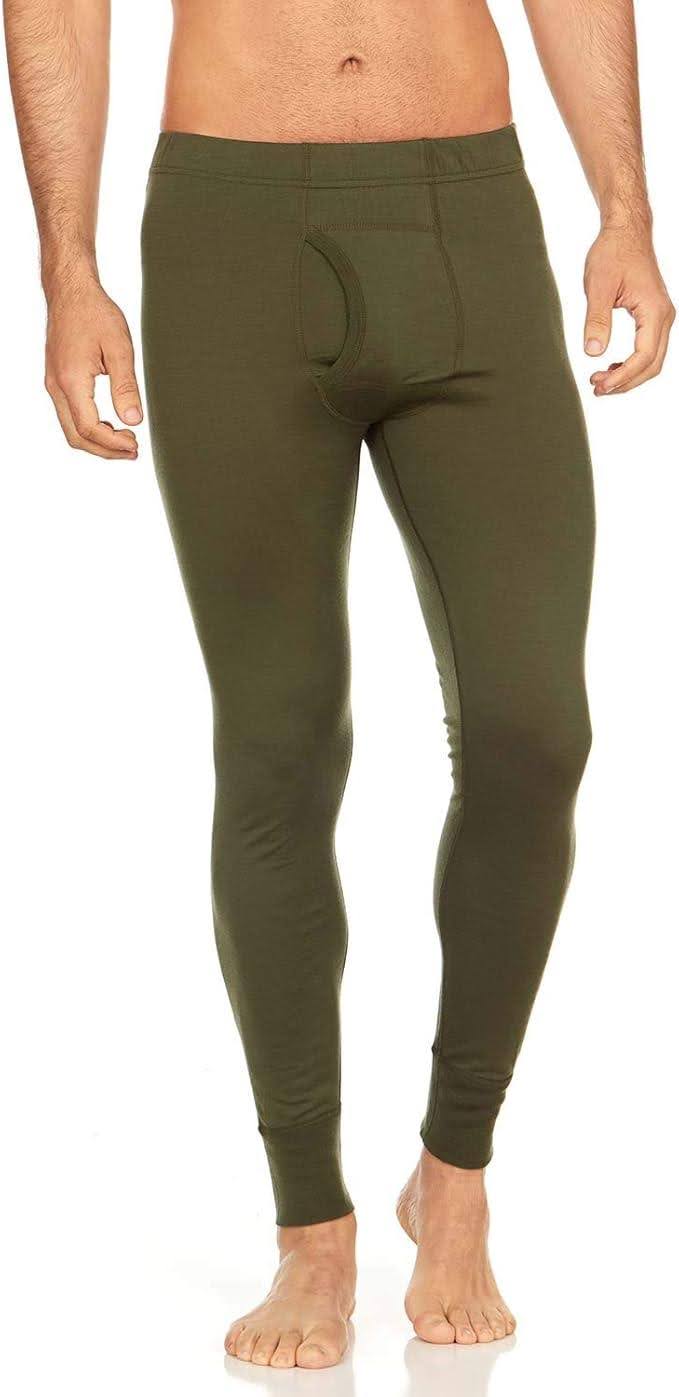
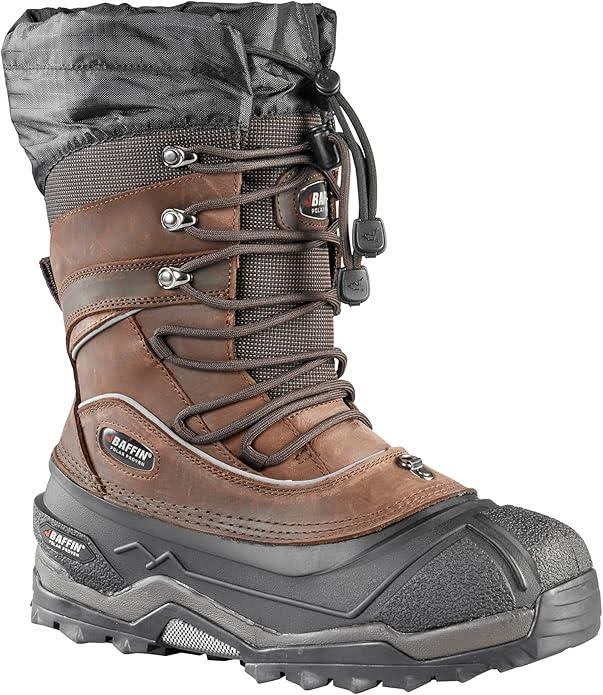
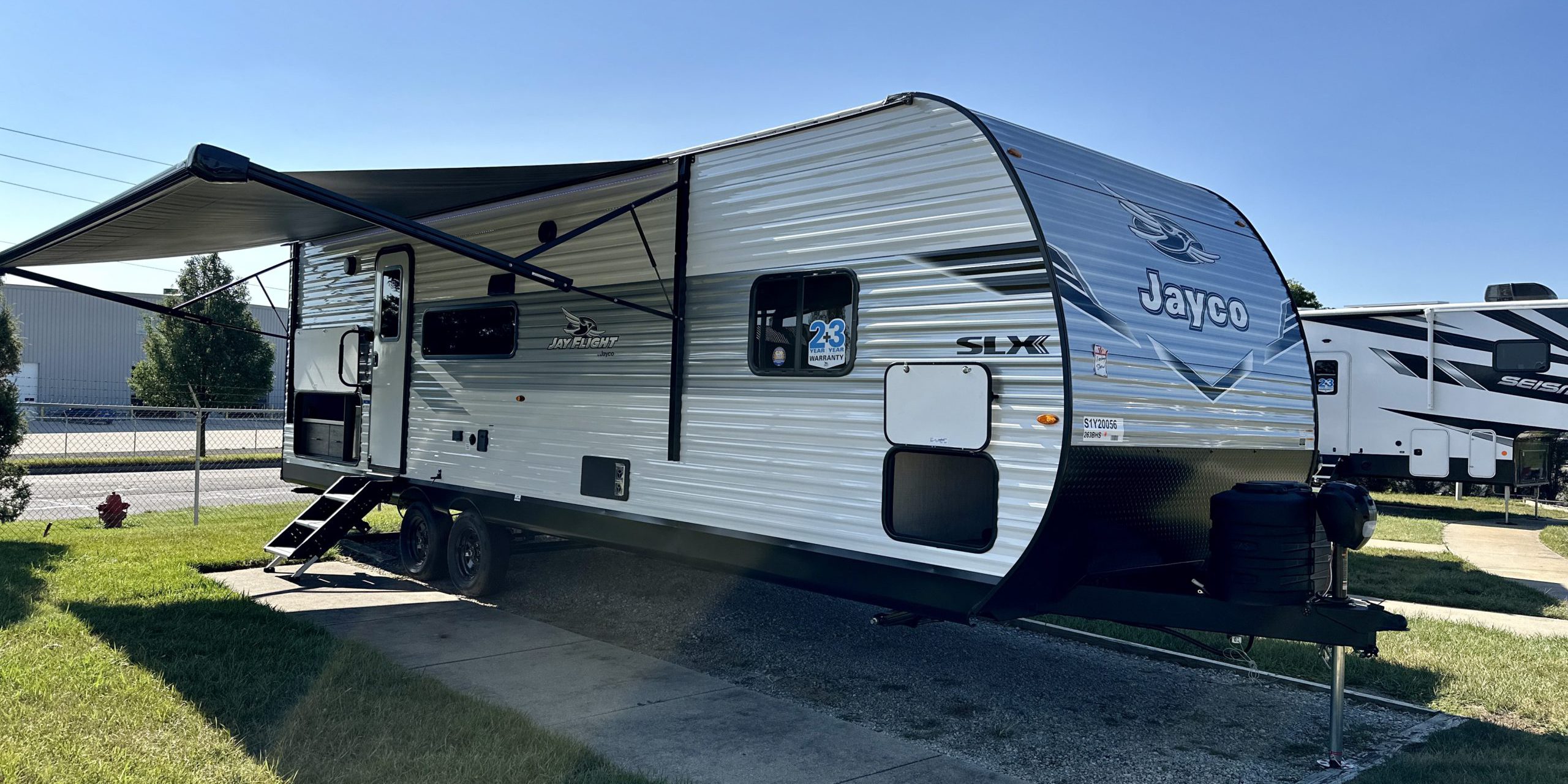
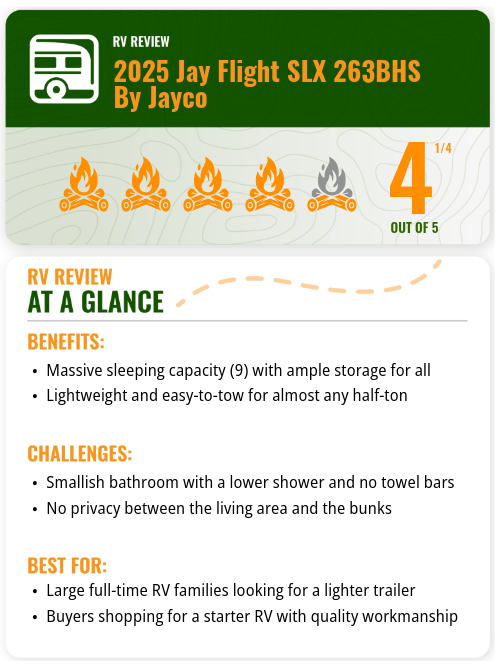 The Jayco Jay Flight SLX 263BHS has a lot going for it. Near the top of the list: It’s a well-made family RV. Its practical features and excellent construction are perfect for simplifying the camping experience to make wonderful memories with the family. Practical amenities, extensive sleeping and storage space, and impressive workmanship all combine to make the Jayco Jay Flight SLX 263BHS trailer a truly fantastic value at $39,143 MSRP.
The Jayco Jay Flight SLX 263BHS has a lot going for it. Near the top of the list: It’s a well-made family RV. Its practical features and excellent construction are perfect for simplifying the camping experience to make wonderful memories with the family. Practical amenities, extensive sleeping and storage space, and impressive workmanship all combine to make the Jayco Jay Flight SLX 263BHS trailer a truly fantastic value at $39,143 MSRP. 